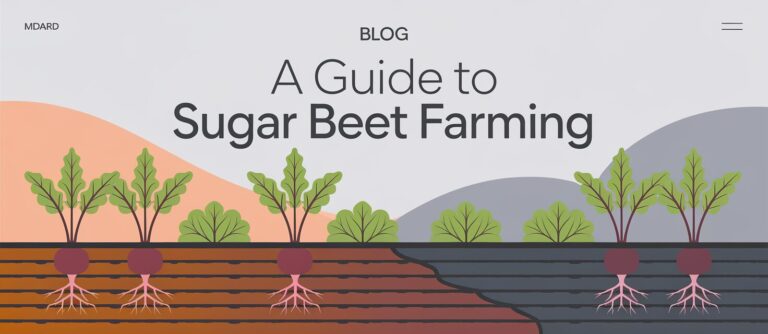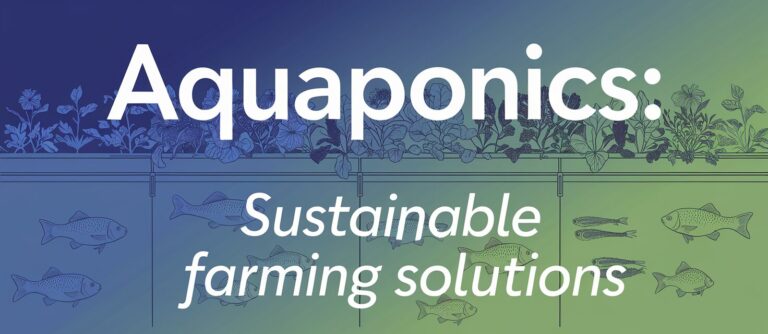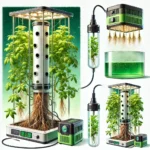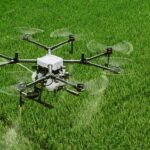Email: blogagri2@gmail.com
Future of Aeroponic Farming Systems

Introduction: The Problem with Traditional Farming
Every civilization has witnessed the rise of agriculture, and farming is an idea that is ever bothered. Bad agricultural practices today are under increasing threat in terms of environmental and economic challenges. Because of the increase in the global population as well as the effects of climate change on natural resources, normal farming, which relies on soil, is becoming less practical.
One of the major issues with the traditional farming system is the amount of water consumed. Approximately 70% of the world’s freshwater usage is for agriculture, and a large portion of that water is wasted because of the inefficient ways local people use to irrigate. Soil erosion is another aspect in which, regardless of the efforts made by the scientists, millions of acres of farmlands have become degraded every year due to abuse and/or resource… naivety.
Defining and explaining aeroponics
Aeroponics is a technique that has proved helpful in addressing some of the constraints facing traditional agriculture. Unlike traditional methods that involve planting in the soil, in this system of growing plants, air is used, which requires not too much water and not much room, yet higher productivity can be obtained in a shorter time span. In this article, we will look at aeroponically assisted agricultural growing systems and their many particulars – the devices, the principles of operation, and the historical context of this system.
What is Aeroponics?
Simply put, Aeroponics is a plant cultivation technique that does not employ the use of soil or minimum substrate such as peat or coco coir. In place of the soil, the guide employs only air while moistening the roots with nutrients at regular intervals. The term “aeroponic” comes from ‘aero’, the Greek word for “air,” and ‘ponos,’ the Greek word for “labour” signifying the growing of plants using only air, water, and nutrients.
Therefore, it is within this larger family of soilless agriculture, including hydroponics and aquaponics, where aeroponics falls. But, in contrast to a deep water culture system where the roots of the plants are submerged in water, nutrients in aeroponics are misted onto the plants’ roots that have been left exposed to the air. This new approach has been shown to harness various advantages, including fast plant growth, better yield, and reduced water requirement.
Key Elements Responsible for Aeroponic System
Maintaining a conventional aeroponic grow system necessitates the inclusion of several basic components:
- Aeroponic Mister: This is an integral part of the system in which the aeroponic mister sprinkles a fine spray of water and nutrients on the plants’ roots. The spray adjustability is important so that the roots are not overly wet.
- Aeroponic Pump: The pump facilitates the constant application of the nutrient ‘mist’ to the misters within specific periods in a bid to administer nutrients to the plant without saturating the roots with the nutrient solution.
- Aeroponic Tower: In vertical farming systems, space is optimized by using aeroponic towers, which extend it vertically to house more plants’ density with minimal ground area. The stems of the plants are suspended in a vertical fashion to fit as many plants as possible in a limited area.
Comparison of Aeroponics to Other Hydroponics Strategies
There is no doubt that aeroponics is much related to hydroponics and aquaponics, however, it is unique in its own way. Plants grow in water for hydroponic systems, while the nutrients for aquaponic plants come from fish waste. In other words, it completely eliminates the use of any soil or even fish, but utilizes a nutrient mist to tend to the plants.
The greatest benefit of growing plants using aeroponic systems is the oxygenation of the roots. In this case, the roots are suspended in the air, which allows them to take in oxygen more readily, thus enhancing their growth and leaving them stronger and healthier.
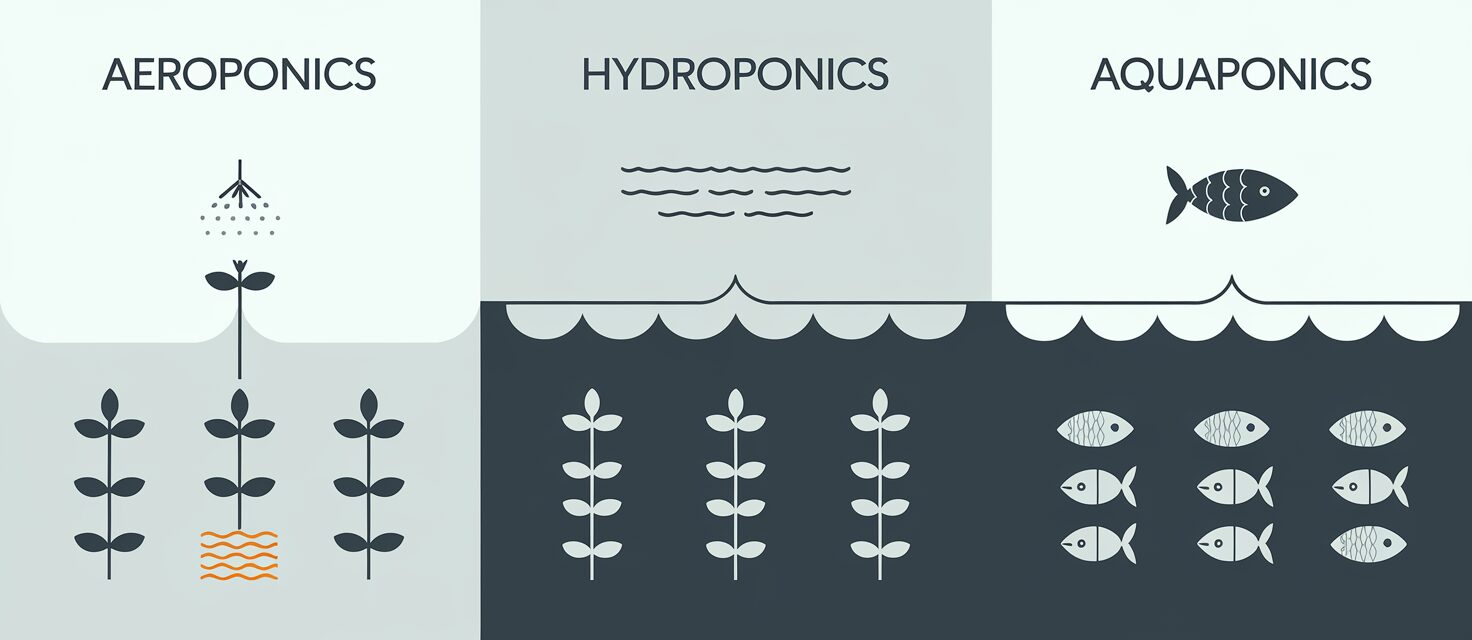
Components of Aeroponic Grow Systems
Aeroponic Growing System – Year in and Year out
The most striking feature of an aeroponic system is its efficiency in delivering nutrients in the right amounts along with sufficient oxygen and moisture to the plant. With this system, the growing media is waterlogged or devoid of air, congesting the roots and hence minimal or no growth is obtained, while the roots are prone to rot. An aeroponic is a solution. It is a system in which the plant roots are immersed in the air and are misted with nutrients.
It has been proven through research that plants grown in containers that are aeroponic grow over 25 percent faster than those planted in the normal form of soil. Other studies have found out that you can use up to 95 percent less water in aeroponic systems as opposed to growing plants using conventional methods, which is very good for arid areas.
Aeroponic Towers: How They Work
Aeroponic towers are some of the commonly used aeroponic grow systems that can be utilized even in urban farming. These vertical structures enable the growing of plants in layers thus utilizing much space and enabling planting with high density.
Following is an operational protocol of a standard aeroponic tower.
- Plants are planted in smallholders or slots that are fixed on the sides of the tower.
- The roots hang freely inside the static tower and are not covered.
- A water pump pumps nutrient-rich water to misting heads which are placed inside the tower.
- The misters give the roots a fine mist of water which is taken up through the roots.
- The other water drains to the bottom of the tower where it is pumped back to the misting system.
This allows for an increase in the number of plants grown in a smaller volume by going vertical, which is suitable for cities where space is a limitation. These systems are also very efficient in water usage since the nutrient feed is a closed loop in the tower.
Aeroponic Systems DIY
You Can Build an Aeroponic System.
As for those who are enthusiastic about ecological agriculture, constructing an aeroponic system oneself is a perfect step forward towards such undisputable innovation. So, if you want to create your very own aeroponic grow system, advanced skills of engineering are not necessary. But there are some important elements.
Normal Components for the Construction of an Aeroponic System.
- The reservoir holds the liquid nutrient medium, which is pumped to the sprayers.
- Aeroponic Pump: The purpose of the pump is to circulate the nutrient solution from the reservoir to the misters.
- Aeroponic mister: These nozzles aid in spraying the nutrient solution in the form of a mist which can stick to the roots of the plants.
- Plant Holders: These are devices that hold the plants in an upright position with the lower parts and the roots suspended in air.
- Nutrient Solution: In order for the plants to thrive, there must be enough water and nutrients present, and it is healthy growth that comes in a structured manner.
8 Easy Steps Towards Constructing A Vertical Aeroponic Tower
.You can choose a vertical frame or cylinder to house your plants. You can make it from PVC pipes or reclaimed materials.
Install the Reservoir and Pump: Place a reservoir at the bottom of your tower with which you will keep your nutrient solution. Attach the pump, which will push the solution to the misters.
Position the Misters: Place within the main chamber that which contains the aeroponic misters ensuring they uniformly wet the roots of the plant.
Insert Plant Holders: Place the net cups containing plants into the tower or plant holders that you have made, leaving out the roots to hang down within the tower.
Fill the Reservoir and Power the System: add to the reservoir your nutrient solution, connect the pump and begin misting!
You can build an aeroponic system to grow fresh, natural vegetables at home. If it is herbs, vegetables or even flowers you would like to grow, a do-it-yourself aeroponic tower can guarantee better growth rates, produce bigger crops and solve gardening problems in an eco-friendly way.
If you Missed: Mastering Beetroot Farming: 14 Essential Steps for Maximum Yield and Quality
Benefits of Aeroponics for Commercial Growers
Increased Yields with Less Space
The other major advantages of the aeroponic systems is that they are able to achieve higher yields within smaller area. Of particular interest to commercial growers are the aeroponic towers and vertical farming systems that accommodate and allow the growing of hundreds to even thousands of plants in one room.
Studies reveal that aeroponics have the potential to increase the yield of the crop by about 30-40%. On the other hand normal farming systems which can benefit commercial growers in terms of costs. Because of the short growing periods farmers will be able to reap benefits from several harvests in a year.


